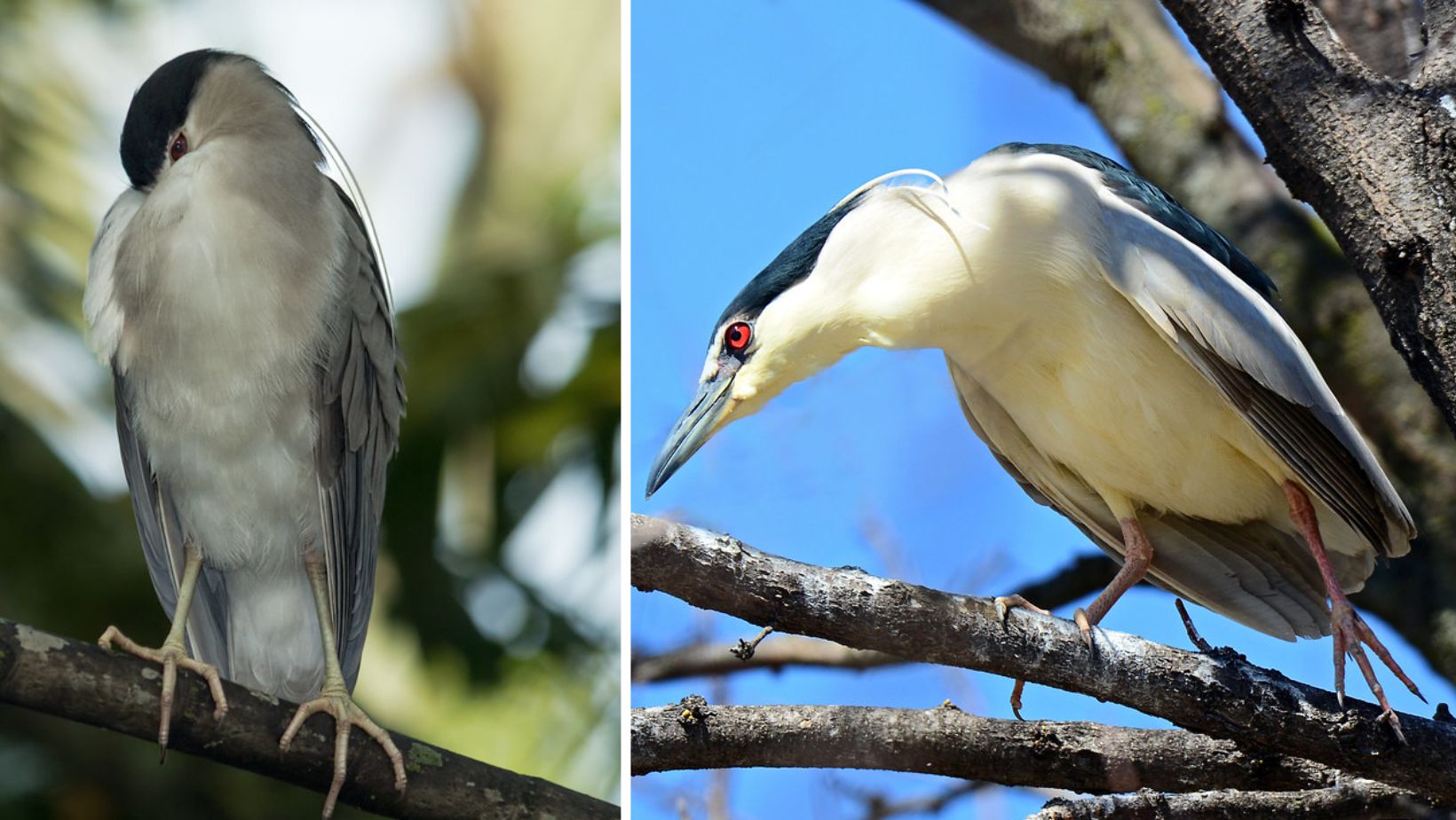
A robust bird species often seen with its neck tucked in clad in an overall pale grayish appearance with a distinctive black cap and black back.
Meet the Black-crowned Night Heron:
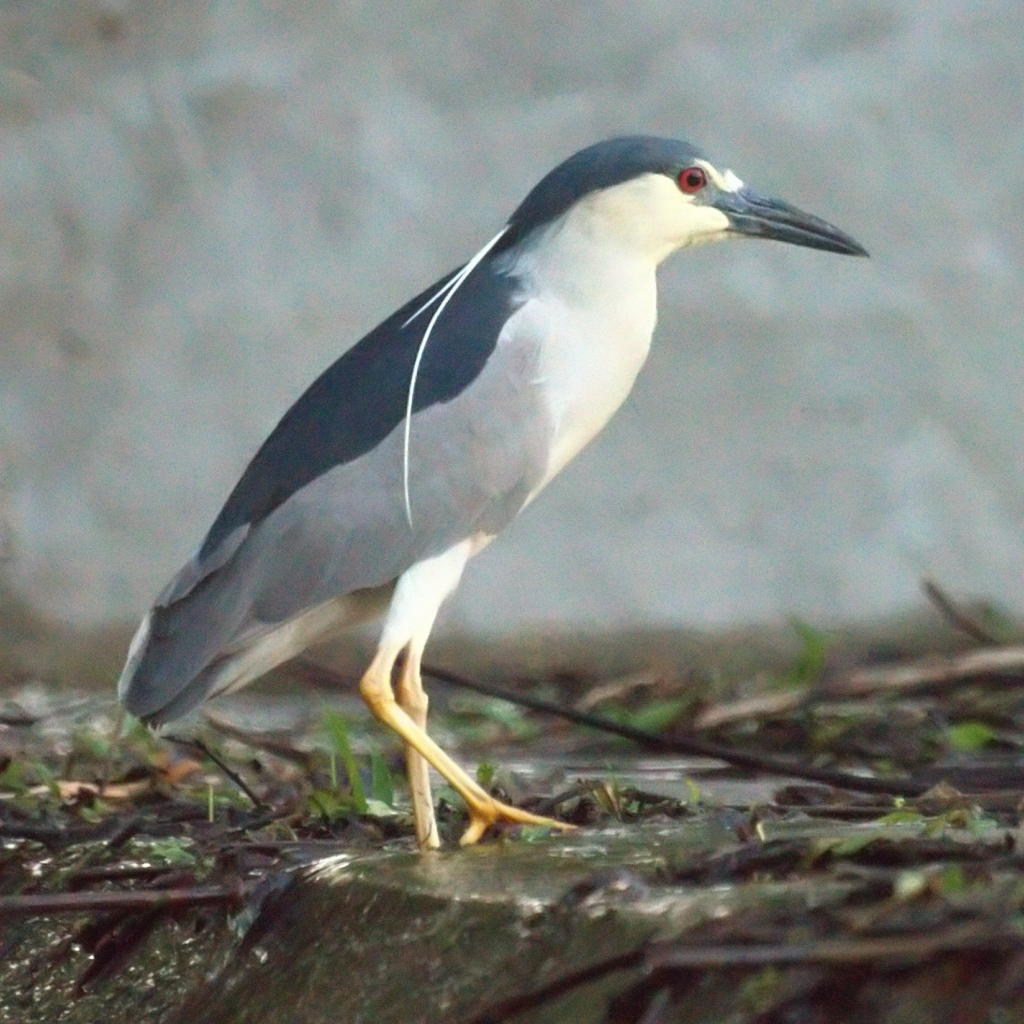 “Black Crowned Night Heron (5770945257)” by Mike’s Birds is licensed under CC BY-SA 2.0.
“Black Crowned Night Heron (5770945257)” by Mike’s Birds is licensed under CC BY-SA 2.0.
The Black-crowned night heron (Nycticorax nycticorax) is a medium-sized heron found across many regions of the world. These birds possess a robust appearance, often appearing hunched over with their heads tucked into their shoulders, and this posture is frequently observed. They are most active during the evening and night when they emerge from their daytime roosts to forage in wetlands. Adult Black-crowned night herons feature a black crown and back, while the rest of their body is predominantly white or grey. They have striking red eyes and short yellow legs. Their wings are pale gray, and their underparts are white. In greeting and courtship displays, they showcase two or three long white plumes extending from the back of their heads.
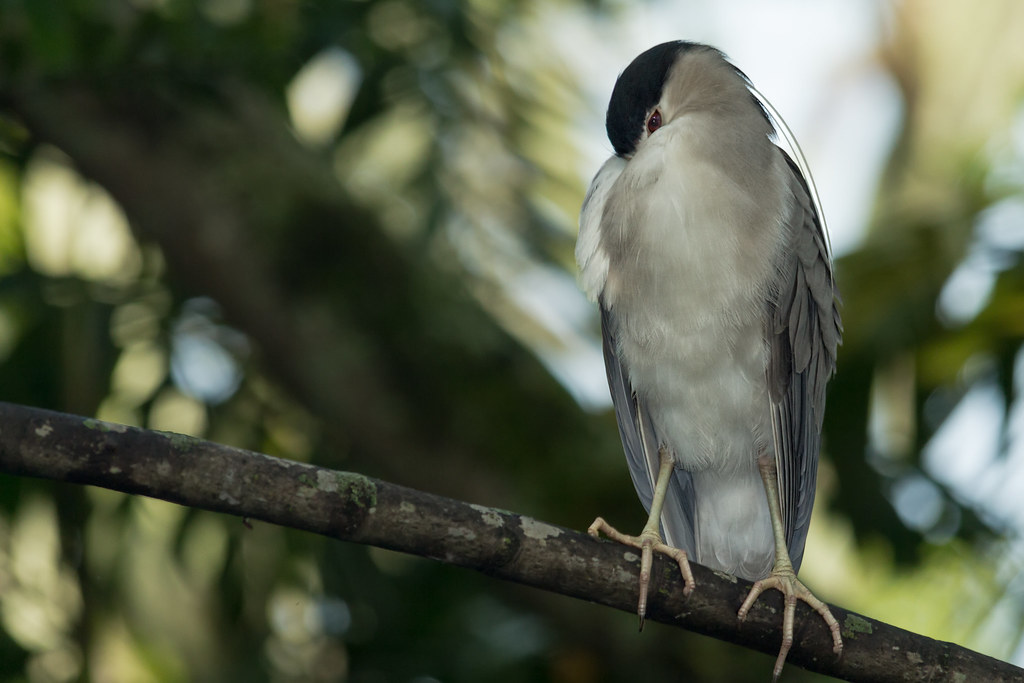 “Black-crowned Night-Heron | Guaco (Nycticorax nycticorax)” by ferjflores is licensed under CC BY-SA 2.0.
“Black-crowned Night-Heron | Guaco (Nycticorax nycticorax)” by ferjflores is licensed under CC BY-SA 2.0.
Both males and females look similar, with males being slightly larger.
Juvenile Black-crowned night herons sport dull grey-brown plumage on their heads, wings, and backs, adorned with numerous pale spots. Their underparts are paler with streaks of brown, and they have orange eyes and less vibrant yellowish-green legs.
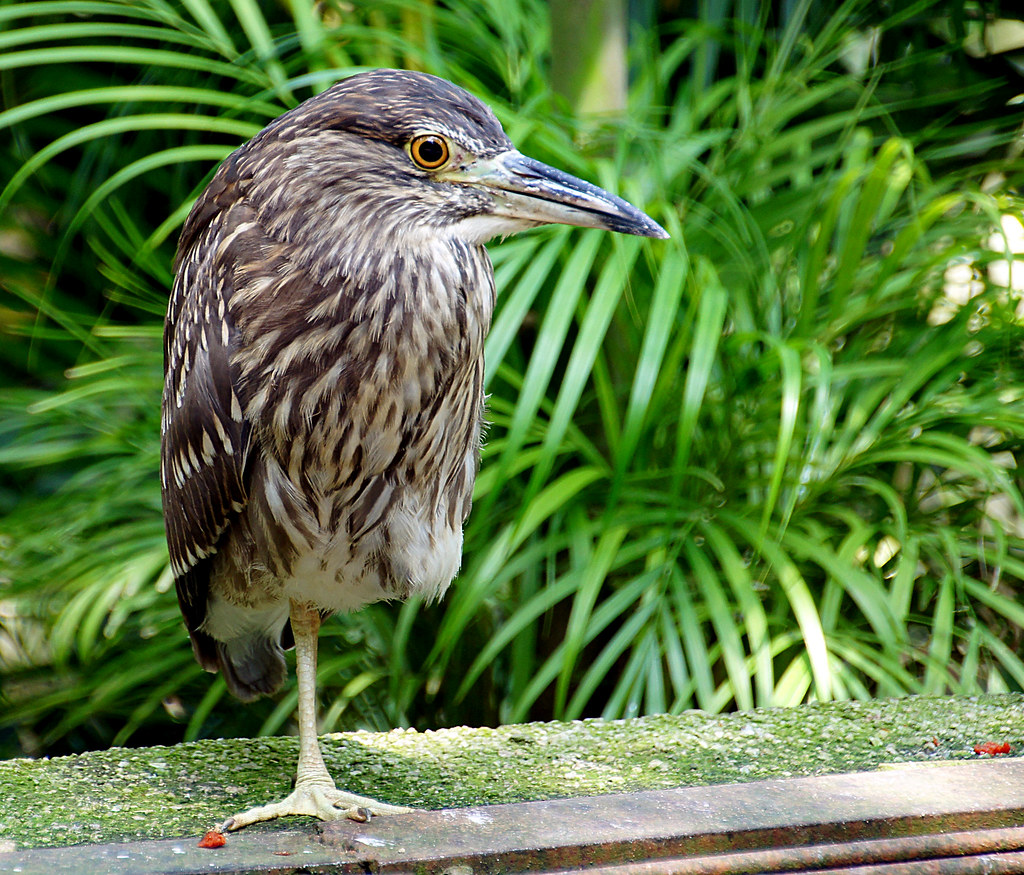 “Black-crowned Night Heron Juvenile” by Bernard Spragg is marked with CC0 1.0.
“Black-crowned Night Heron Juvenile” by Bernard Spragg is marked with CC0 1.0.
These herons can be found breeding on every continent except Antarctica and Australasia. In the Americas, they range from Washington to Quebec, through coastal Mexico, and into Central America and the Caribbean. During winter, they may venture as far north as the New England states and Oregon. In the Old World, various subspecies inhabit regions from Japan to Europe, Africa, and India.
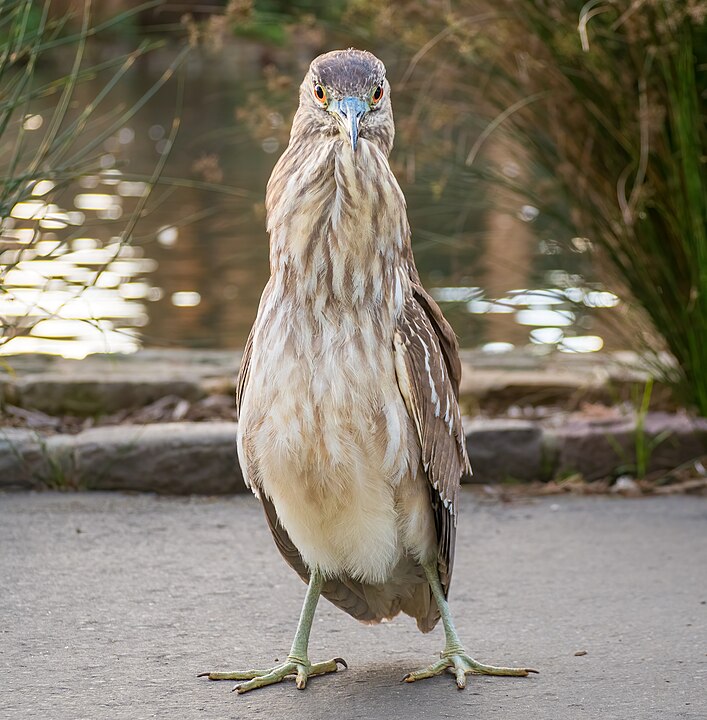 Photo courtesy of Rhododendrites /CC BY-SA 4.0
Photo courtesy of Rhododendrites /CC BY-SA 4.0
Their habitat encompasses diverse environments such as swamps, rivers, lakes, salt marshes, lagoons, mudflats, mangroves, reed beds, bamboo groves, and other trees. Aquatic and marginal vegetation are essential for nesting and roosting.
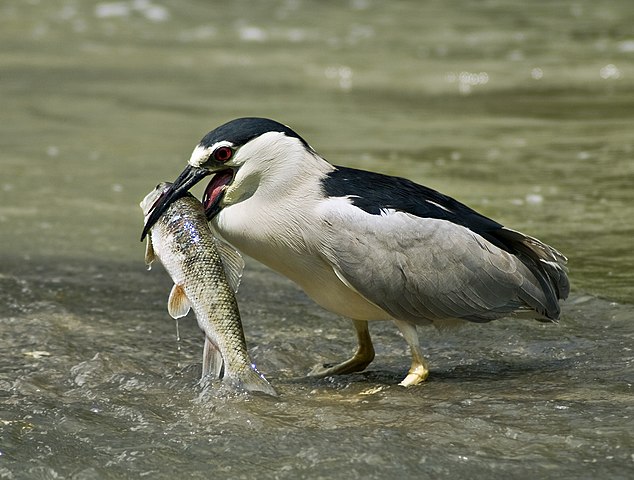 Photo courtesy of Alain Carpentier/CC BY 3.0
Photo courtesy of Alain Carpentier/CC BY 3.0
Black-crowned night herons are carnivorous, primarily piscivores. Their diet includes fish and other aquatic life, such as frogs, tadpoles, snakes, turtles, lizards, insect larvae, adult insects, spiders, crustaceans, mollusks, small rodents, bats, chicks, and the eggs of other bird species.
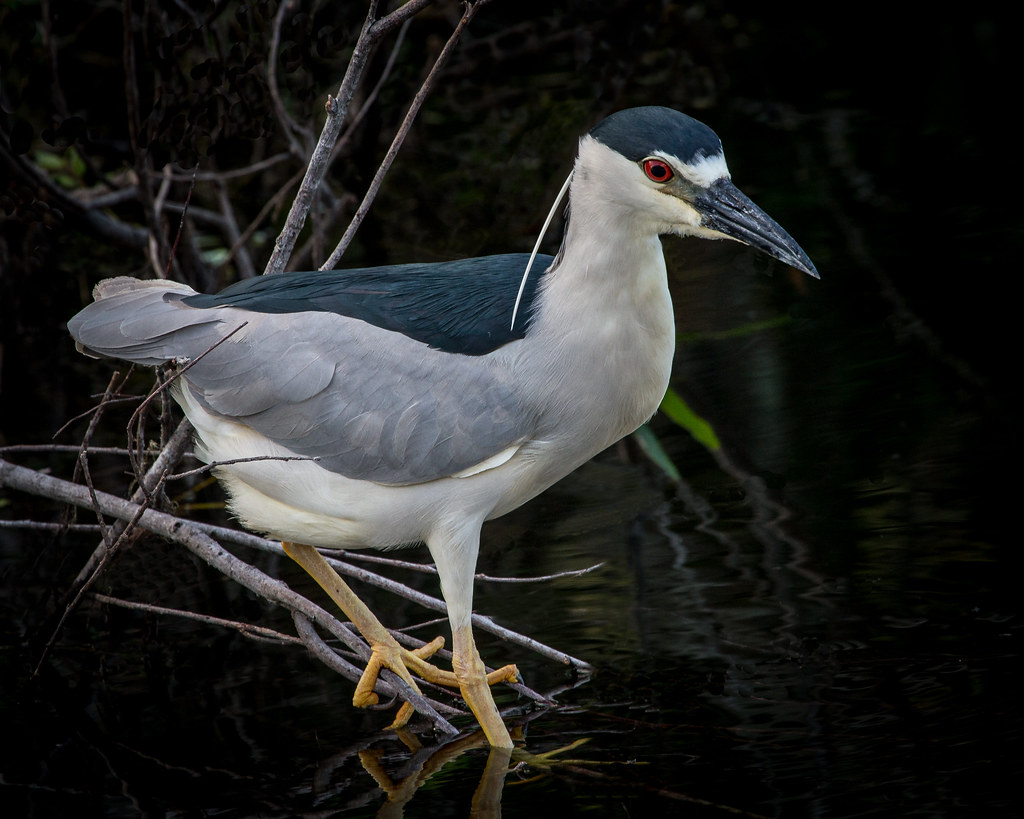 “Black-crowned Night Heron” by Andy Morffew is licensed under CC BY 2.0.
“Black-crowned Night Heron” by Andy Morffew is licensed under CC BY 2.0.
These herons appear to be monogamous, with one male mating exclusively with one female. Males perform an elaborate courtship display, often conducted at night. The display includes walking in a crouching position with the head lowered, bill clapping, wing flapping, singing, and dancing. Once the female accepts, the birds preen each other, touch, and clasp each other’s bills. The breeding season varies depending on the region. They nest in colonies that can be extensive, with as many as 5000-6000 pairs in Malaysia. Nesting sites are diverse, including cliff ledges, reed beds, tall trees, bushes, or the ground. They lay 3-5 eggs, and some pairs can produce two broods per season. Incubation lasts about 21-22 days, and both parents participate in brooding. Chicks leave the nest after two weeks, staying nearby. By three weeks old, they can fly to treetops if disturbed, and by 6-7 weeks, they become proficient fliers and venture to feeding grounds. Sexual maturity is reached at 2-3 years.
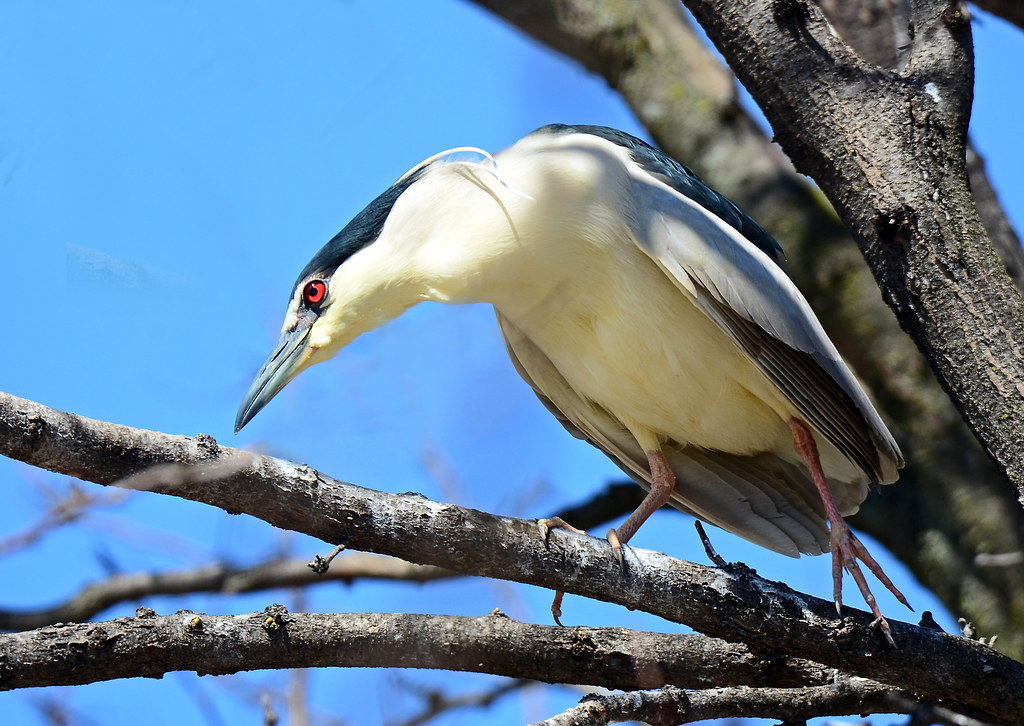 “Black Crowned Night Heron” by AcrylicArtist is licensed under CC BY 2.0.
“Black Crowned Night Heron” by AcrylicArtist is licensed under CC BY 2.0.
Black-crowned night herons are social birds throughout the year, often associating with other species. During winter, they roost together. These migrating birds fly at night and rest during the day. While foraging, they stand still at the water’s edge, waiting to ambush their prey, typically during the evening or early morning. They are known for engaging in bait fishing, using edible or inedible buoyant objects to lure or distract fish within striking range—a rare example of tool use among birds. During the day, they rest in trees or bushes. When it’s cold, young herons leave their perches to huddle in the nest. They are territorial and defend their feeding and nesting territories. Their calls, resembling ‘qua,’ ‘quak,’ or ‘quark,’ are most frequently heard during flight or when perching.
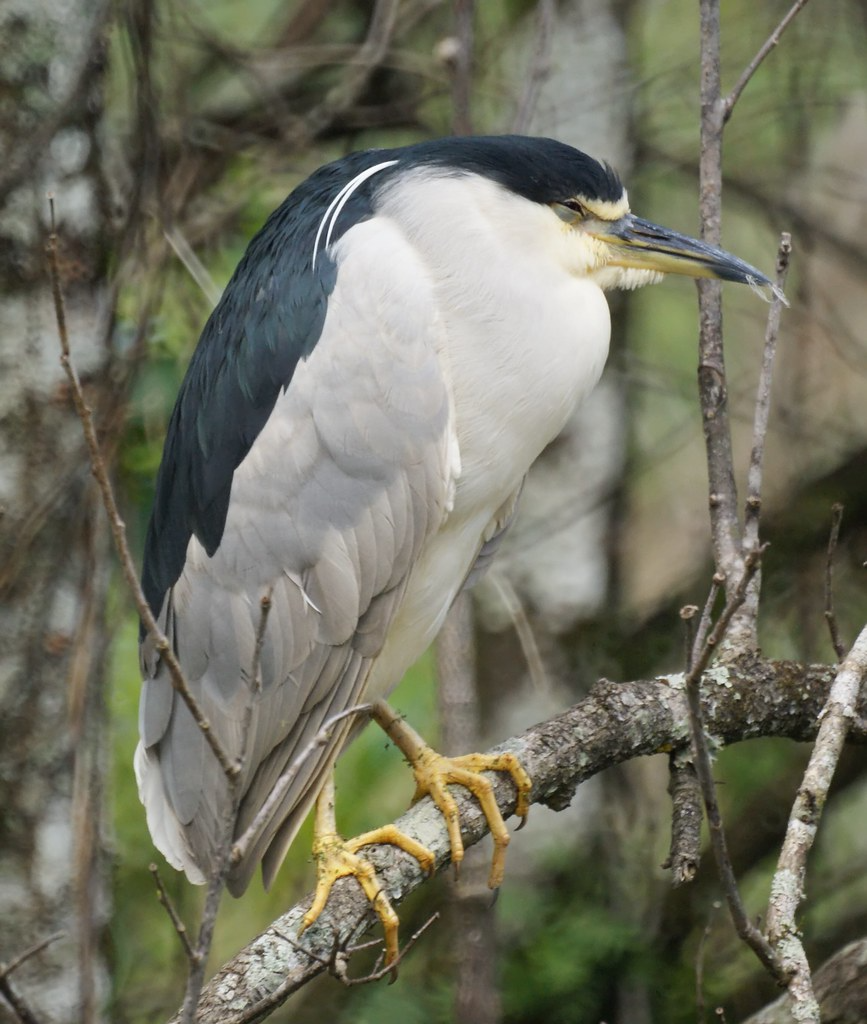 “Black Crowned Night Heron” by Mike’s Birds is licensed under CC BY-SA 2.0.
“Black Crowned Night Heron” by Mike’s Birds is licensed under CC BY-SA 2.0.
While Black-crowned night herons are relatively abundant and widespread, they face localized threats. These include habitat loss, wetland degradation, petroleum and pesticide contamination, hunting, and disease. The population estimate varies, with around 570,000-3,730,000 individuals worldwide. They are classified as Least Concern (LC) on the IUCN Red List, although their numbers are currently decreasing.
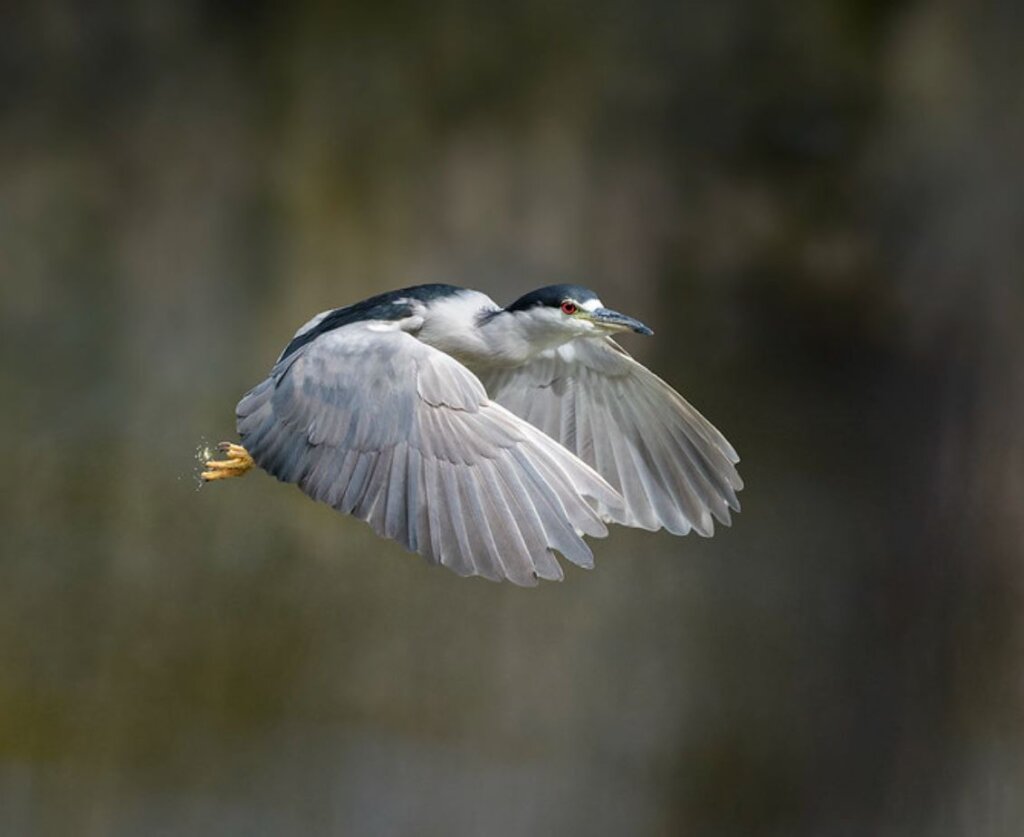 “Black-crowned Night Heron / Bihoreau Gris / Nycticorax nycticorax” by FRITSCHI PHOTOGRAPHY is licensed under CC BY 2.0. (crowned)
“Black-crowned Night Heron / Bihoreau Gris / Nycticorax nycticorax” by FRITSCHI PHOTOGRAPHY is licensed under CC BY 2.0. (crowned)
Listen to this bird next:
This article uses material from Wikipedia.org which is licensed under the GNU Free Documentation License via Copyright Wikipedia. Images on this page are the sole property of the photographers (unless marked as Public Domain). Please read the license and or contact the photographers directly before using them for any purpose. Thank you all. Mostly
Large For Their Species, The Male/Female, Red, And Yellow Combination Also Renders Them Outstandingly Beautiful!
Please SHARE this article with all your bird-loving friends and family.

